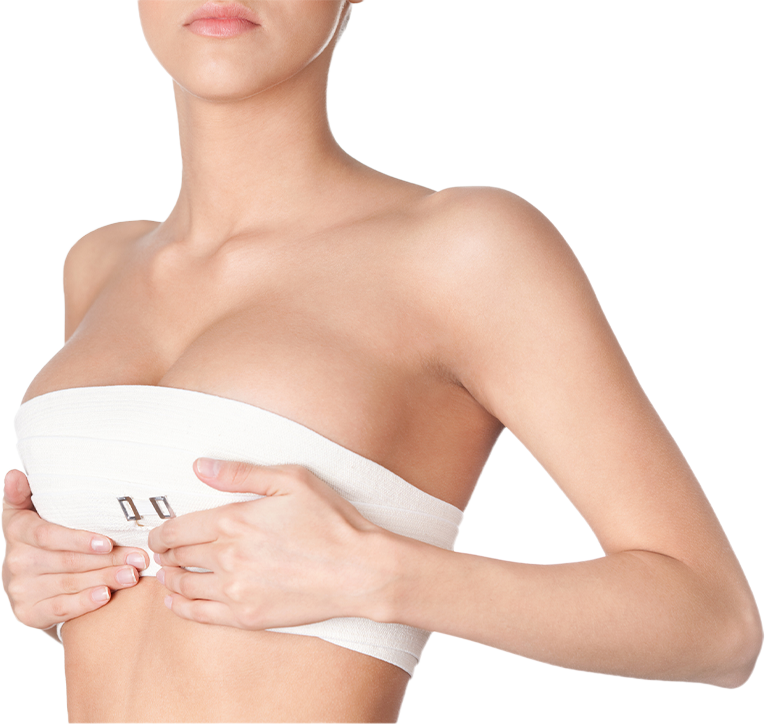Main Content
Introduction
Tuberous breast deformity—also called tubular breasts—is a congenital condition in which the breasts develop an abnormally constricted base, herniated areolas, and a tubular silhouette. Patients often feel self-conscious about shape and asymmetry. At Monarch Plastic Surgery & Skin Renewal Center in Sandy Springs—serving Buckhead and Atlanta—Dr. Carmen Kavali employs specialized techniques for tuberous breast correction, combining tissue release, implant or fat grafting, and areolar adjustment to create a fuller, more rounded breast contour. Tailored to each patient’s anatomy, tuberous breast surgery restores both form and confidence in a single, precise procedure.
Understanding Tuberous Breasts
- Constricted Base: The breast footprint on the chest is narrow, limiting tissue expansion.
- Herniation of the Areola: The nipple–areola complex bulges through constricted tissue, creating a “puffy” look.
- Vertical Elongation: Breasts appear unusually tall and narrow rather than rounded.
- Asymmetry: One breast is often more affected than the other, amplifying imbalance.
These features stem from tight fibrous bands around the lower pole. Successful correction addresses each element—releasing constrictions, expanding the base, and normalizing areolar shape—while achieving natural proportions and symmetry.
Who Is a Candidate?
Tuberous breast surgery may be right for you if you:
- Have tubular-shaped breasts with a narrow base and lack lower-pole fullness
- Notice puffy, enlarged, or herniated areolas
- Experience significant asymmetry
- Are in good overall health with no uncontrolled conditions
- Completed breast development (usually age 18+)
- Maintain realistic expectations about size, shape, and scarring
During your consultation, Dr. Kavali evaluates breast development, skin elasticity, chest anatomy, and your goals to confirm candidacy and plan the precise combination of techniques required.
What to Expect During Your Consultation
-
Educational Overview
Enroll in our interactive EMMI® module on tuberous breast anatomy and correction.
-
Team Assessment
A Physician Assistant reviews your medical history, medications, prior surgeries, and photographs your breasts.
-
Surgeon Evaluation
- Physical Exam: Measure base width, nipple-fold distance, and skin quality
- Deformity Classification: Grade I–IV by constriction severity
- Goal Discussion: Desired size, shape, and symmetry targets
-
Customized Plan Presentation
Dr. Kavali outlines tissue-release techniques, augmentation method (implant vs. fat graft), areolar adjustment, incision options, anesthesia, and expected scars.
-
Preoperative Guidance
Receive instructions on labs, medication changes, tobacco cessation, nutrition, and home preparation for a safe surgery and smooth recovery.
Four Key Decisions
- Constrictive Ring Release
- Radial Scoring: Multiple incisions in the lower pole to free tight bands and expand the base
- Circumferential Release: Circular incision around areola for controlled inframammary fold expansion
- Volume Restoration Method
- Implant Augmentation: Silicone or saline implants chosen for profile, shape, and size
- Fat Grafting: Layered autologous fat for subtle volume gain and natural feel, often combined with liposuction
- Areolar Adjustment
- Reduction & Reshaping: “Doughnut” (Benelli) excision to correct herniation and resize
- Positioning: Relocate the areola for symmetry
- Incision Pattern
- Periareolar: Scar around areola—ideal for release and adjustment
- Inframammary: Hidden under fold—preferred for larger implants or extensive release
- Vertical (Lollipop): Combines periareolar + vertical limb for moderate lift
The Procedure: Step by Step
-
Anesthesia & Marking
General anesthesia with upright markings of areola borders, inframammary fold, and scoring sites.
-
Areolar Incision & Reduction
Circular cut around areola; reshape and resize.
-
Constrictive Ring Release
Radial or circumferential scoring to expand the lower pole.
-
Pocket Creation & Adjustment
Dissect a subglandular or submuscular pocket matching the new base; reinforce with sutures if needed.
-
Volume Placement
- Implants: “No-touch” insertion for even fullness
- Fat Graft: Micro-aliquots injected in a lattice for smooth contour
-
Closure & Dressing
Multilayer dissolvable sutures close incisions; apply Steri-strips and a supportive bra.
Time: 2–3 hours (varies by technique)
Setting: Accredited outpatient suite—same-day discharge with escort
Preparing for Surgery
- Medical Clearance: Labs and EKG if over 40 or at risk
- Medication Review: Stop aspirin, NSAIDs, supplements 10–14 days pre-op
- Lifestyle Adjustments: Cease smoking/vaping 4 weeks pre- and post-op; avoid alcohol 1 week before/after
- Logistics & Home Prep: Arrange transport, rest support, pillows, easy meals, ice packs, and entertainment
Recovery & Aftercare
Days 1–3
- Swelling and discomfort peak by day two—manage with prescribed pain relief and cold compresses
- Rest upright; avoid bending or lifting
Weeks 1–2
- One-week follow-up: adjust dressings, assess healing
- Wear surgical bra continuously; light walking encouraged
Weeks 3–6
- Swelling subsides; lower pole contour refines
- Begin scar care with silicone gel/sheets; resume desk work; defer chest exercise
Months 2–6
- Final breast shape stabilizes by month three to six
- Gentle lower-pole massage may be guided; six-month symmetry check and touch-up planning
Strict adherence to after-care instructions maximizes comfort and optimal aesthetic outcomes.
Risks & Safety Considerations
- Infection: Minimized by sterile technique and antibiotics
- Bleeding/Hematoma: May require drainage if significant
- Scarring: Typically fades to thin lines; sun protection essential
- Implant Complications: Rippling, malposition, or contracture reduced by precise pocket work
- Fat Graft Issues: Fat necrosis/oil cysts mitigated by micro-aliquot injections
- Asymmetry: Addressed initially and with minor revisions if necessary
Dr. Kavali will discuss all potential complications to ensure informed consent.
Combining Procedures
- Mastopexy: Lift sagging skin for upper-pole fullness
- Hybrid Augmentation: Small implant + fat graft for maximal yet natural volume
- Body Contouring: Concurrent tummy tuck or flank liposuction for overall silhouette harmony
Bundling reduces total downtime and delivers cohesive results.
Choosing the Right Surgeon & Facility
When selecting tuberous breast correction in Sandy Springs, Buckhead, or Atlanta, verify:
- Board Certification: American Board of Plastic Surgery
- Specialty Training: Experience in congenital breast deformity correction
- Accredited Facility: AAAASF or Joint Commission–accredited
- Before-and-After Portfolio: Demonstrating graded deformity corrections
- Patient Reviews: Praise for technical skill and compassionate care
Dr. Carmen Kavali’s expertise and our state-of-the-art suite ensure safety, precision, and patient satisfaction.
Lifestyle Impact & Maintenance
- Enhanced Confidence: Improved self-image and clothing fit
- Stable Results: Implants last 10–15 years; fat grafts are permanent
- Breast Health: Continue regular self-exams and mammograms
- Supportive Bras: Wear snug bras for exercise and daily wear
- Scar Care: Use SPF and topical treatments to maintain fine scars
Regular follow-ups allow early detection of any changes and timely management.
Next Steps: Schedule Your Consultation
Ready to correct tubular breasts and achieve a natural, rounded contour? Contact Monarch Plastic Surgery & Skin Renewal Center:
- Call: 404.250.3333
- Email: info(at)drkavali(dotted)com
- Visit: 6045 Barfield Rd, Suite 100, Atlanta, GA 30328
- Online: Request a Consultation
Your personalized consultation includes a comprehensive exam, deformity grading, and detailed surgical planning—beginning your journey to renewed shape and confidence.


